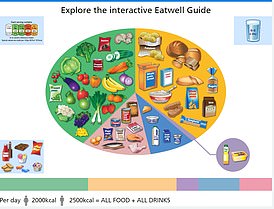‘Super-bread’ that could help you lose weight by tricking you into feeling full
>
Many dieters avoid bread due to its high levels of carbohydrates and added sugar.
But researchers now claim to have created a loaf that could, in theory, help people shed weight — by tricking the body into feeling full.
They crafted a flour derived from chickpeas that, when consumed in the form of a bread roll with jam, left people feeling fuller than they did after eating a normal bap.
Swapping wheat flour to their chickpea version could limit overeating and ultimately reduce obesity, the scientists believe.
However, experts warn that a simple flour swap alone won’t be enough — as keeping active and following a healthy diet are needed for better health in the long term.
Scientists say they have created a loaf (pictured) that could actually help people shed weight — by tricking the body into feeling full. They crafted a flour made from chickpeas that, when consumed in the form of a bread roll with jam, left people feeling less hungry than they did after eating a normal bap

Researchers made three different types of bread rolls. One was made using regular white wheat flour (left), while the other batches substituted either 30 or 60 per cent of this flour for PulseON Foods chickpea flour (middle and right)
Researchers from the Quadram Institute, a food and health research centre in Norwich, and King’s College London made bread using ‘cellular chickpea flour’ instead of regular wheat flour.
The study is the first of its kind to examine the new ingredient, which is made by PuseON Foods — a company set up by the Quadram Institute.
Trendy flours made from chickpeas, lentils and beans involve traditional milling which breaks down the fibre structures key to the pulses’ health benefits.
But the chickpea flour used in the study made through a new milling method that preserves the fibre structure of the pulses.
The scientists say this provides a new way to enrich flour-based foods with extra nutritional benefits.
They wanted to find out whether the swap made people feel fuller and had any effect on their fullness-regulating hormones, insulin and blood sugar levels.
Scientists made three different types of bread rolls.
One was made using regular white wheat flour, while the other batches substituted either 30 or 60 per cent of this flour for PulseON Foods chickpea flour.
Twenty healthy people, aged 18 to 45, were recruited.
They consumed each of the rolls, which were served with no-added sugar strawberry jam and a glass of water, on three different days following a 12-hour fast.
One blood sample was taken before eating the roll, followed by eight more in the four hours after having the meal.
Participants were quizzed on their hunger levels before and after eating the bread.
They did not comment on how it tasted, however.
The findings, published in The American Journal of Clinical Nutrition, show that those who ate the bread baked with cell chickpea flour had ‘significantly’ higher levels of satiety hormones in the blood.
These send signals from the gut to the brain that make people feel full, meaning participants felt less hungry after eating the chickpea-enriched bread, the researchers said.
The results suggest that if food manufacturers made the ‘simple switch’ to the cellular chickpea blend, people would feel less hungry, ‘which in turn may potentially help to avoid overeating’ — reducing the risk of obesity, the team said.
Around two-thirds of adults in England are obese or overweight, while one in three 10 and 11-year-olds are obese.
On top of the potential knock-on effects on weight, the bread that was 30 per cent cellular chickpea flour reduced blood glucose levels by as much as 40 per cent, compared to the regular bread.
The researchers said this was due to the slower breakdown of the starch in the cellular flour during digestion.
Therefore, those who eat the bread may also be at a lower risk of type 2 diabetes.
The team noted that more research is needed into whether regularly eating foods made with the chickpea flour can help maintain a healthy body weight and manage diabetes. So they are planning bigger trials to examine this.
Professor Peter Ellis, a nutrition scientist at King’s College London, said: ‘At a time that we are all being encouraged to increase our fibre intake, this study highlights the importance of the physical form of fibre, as intact cell walls, in slowing starch digestion, improving blood glucose levels and simulating satiety hormones to help us feel full.’
Dr Duane Mellor, a registered dietitian and researcher at Aston Medical School in Birmingham, told MailOnline that although claims that foods can keep people fuller for longer ‘sound very promising’ they have not been approved for marketing foods.
He noted that this effect was spotted ‘over a few hours in healthy individuals’.
There is a ‘lack of evidence’ that it will change food intake, weight and other risk factors for type 2 diabetes and cardiovascular disease over the medium or long term, Dr Mellor said.
Similarly, the improvements in blood sugar levels was ‘over the period of a few hours in a controlled environment’, he said.
Dr Mellor said: ‘The important thing to reduce risk of developing type 2 diabetes and cardiovascular disease is to maintain a healthy weight, be physically active and eat a varied healthy diet.’
‘[It should be] based on vegetables, pulses, nuts, seeds and fruit, with some wholegrain and modest amounts of meat and dairy products — or alternatives if you are vegetarian.
‘Simply trying to change the type of bread you eat without looking at your lifestyle as a whole is unlikely to have a significant long term effect.’

